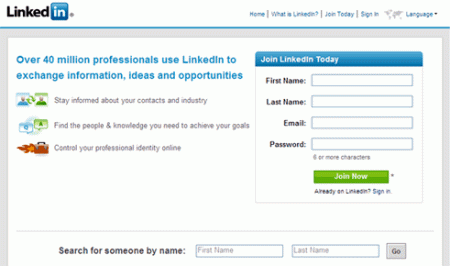
To give your law firm a jump-start in using social media I thought it would be beneficial to share my personal observations, opinions, philosophy and tips on how to use it to grow your inbound leads and personal networks.
Most problems law firm’s have with their social media efforts are the following:
- No primary target audience
- No point of differentiation
- No strong appeal
- No time left to create a “consistent” theme
My Social Media Philosophy:
- Social media “teaches” firms to promote themselves the way they should have been doing all along; to lead with benefits instead of your firm’s capabilities and credentials.
- Firms need a differentiated and appealing position to a particular target audience.
- Enlarge the firm’s online footprint so it can be found by your best prospective clients that match up with the core strengths of the firm.
- Through social media, you build relationships, trust and a position of expertise. People always prefer to work with people that they know, trust and like.
- Even though social media is very time-intensive in the beginning, as you get up to speed, it becomes an extremely efficient use of time. Clients have an opportunity to check under the hood, kick the tires and examine the upholstery within their own timetable.
- The central platform for social media is a firm’s blog. As important as it was for your firm to have a website, it is becoming essential that your firm have a blog. Your firm’s website is becoming more like an online static brochure. A blog provides better SEO, fresh and rich content, is more personable, easier to update, provides a reason for your prospective clients and readers to visit often.
The following 10 tips are my suggestions for creating a law firm’s new blog with the objective of building your social media capabilities and credibility:
1. I recommend that you do not incorporate your blog into your firm’s website.
If it is tied into your firm’s website, it is immediately constricted and has no room to breathe and grow. It’s okay for your firm’s Website to show its diversity of clients, but a blog has to have a specific target audience.
The Website is your online brochure, the place where capabilities, credentials and the work reside. The blog will compel you to focus your firm more narrowly without the risk.
2. The firm’s blog should be reflective of its principals.
You have to remember that social media is about people, not an entity. Don’t hide behind the veil of the firm, be the face of the firm. Again, people want to work with people they know, trust and like.
Your firm needs a face. For most small to mid-sized firms, that face needs to be the firm’s principal(s).
From my experience working with prospective clients of, small to mid-sized firms, they always are interested in the chemistry with and oversight of the partners. You are the visionary of the firm. The only way you are going to “get” social media is to participate. If it isn’t a priority for you, it won’t be for your firm.
Also, keep in mind that the firm’s principals are the least likely to leave the firm. If you lose a staff member who you’ve allowed to be the face of the firm through social media, you lose your equity and a significant portion of your audience.
3. Keep the design simple.
The more people you involve in this process the more chance you will have a bottle neck that slows, and most probably stops, the process. Keep the people involved to a minimum. Remember that content is king. It is the fuel for the engine and don’t let anything inhibit generating the content. I would suggest to start out utilizing WordPress, TypePad or Blogger blog platforms. My favorite is WordPress. You can create a blog in minutes rather than days, weeks or months. It will be a constantly evolving process, and its important that you keep it moving. You can easily add pages, navigation and graphics without help from your IT department.
You should be able to have your blog up and running in a matter of minutes, not hours, days, weeks or months. Keep the design clean, simple and easy to navigate. Stay focused on delivering the beneficial content. The site needs to be more personal and less corporate. Let it reflect your personality. Avoid using your firm’s logo. The firm should reside in the background. A side note: be sure that you own your domain.
Make your target audience crystal clear.
4. For your blog to be successful, keep you target audience in mind.
You don’t want traffic for traffic’s sake, you want targeted traffic. This not only will help your SEO, but also when you repurpose content through Twitter, Facebook and LinkedIn.
5. Before you begin to write learn to listen.
Please remember this: reading fuels your writing. A great time saver for your reading is to use an RSS Reader. My suggestion would be to sign up for Google Reader. The key is to find sources for great content and have that content flow to you instead of you having to constantly search for it. Google Reader allows you to easily organize all of your online reading. It is very efficient.
Learn about social media etiquette, understand the importance of transparency and motive when using this emerging media, but remember this one rule, there are no rules when it comes to social media. It is still evolving, and we are pioneers within the space when it comes to legal marketing with this channel. Watch your blog analytics, it will help to fine tune the appeal for your writing. Always look to your readers, what they care about and respond to.
6. Write Concisely. People read online differently than they do print.
They usually don’t read word-for-word, they scan.
Nielsen Norman Group’s research found that 79 percent of their test users always scanned any new page they came across; only 16 percent read word-by-word. This makes it a tough transition for copywriters who tend to be clever and fluff up the copy.
Make your posts scannable by:
- Being brief, give your readers the Readers Digest version, the executive summary. Do the work on their behalf.
- Dividing up copy into shorter paragraphs.
- Using bullet points or numbered lists. Using compelling subheads, quotations, bold, italics, etc., so readers can scan for the information they need.
Follow Hemingway’s example:
“I write one page of masterpiece to ninety-one pages of &*^$,” Hemingway confided to F. Scott Fitzgerald in 1934. “I try to put the s___t in the wastebasket.”
7 .Jump start traffic to your blog to accelerate lead generation.
“Build it and they will come,” is not the answer to generate traffic to your firm’s blog. You must employ proactive tactics to create awareness and interest among prospective clients. The more traffic that you can generate from your target audience, the more rewarding your legal blog will be.
The strategic use of Twitter and eNewsletters can significantly bump up targeted traffic to your blog in a short period of time.
Don’t make the mistake of thinking, “If I’ve written it everyone must have read it.”
The copy for your eNewsletter will come from your blog posts. It takes literally 10 to 15 minutes to create and send. That allows it to be maintainable even when you are at your busiest. Through these two tactics alone you can get 100% return on your time investment from writing your posts.
Here are some quick tips to help generate traffic to your blog:
- Publish posts frequently and consistently.
- Write evergreen posts that have a long shelf life and a good return for your time investment. I know when writing to a legal audience, many of your posts will be time-sensitive, but try to have some very simple and basic posts so you can repurpose.
- Syndicate your new posts to Twitter, Facebook and LinkedIn.
- Add your blog link to your email signature.
- Use a program like SocialOomph to re-purpose your blogs older content through Twitter, Facebook and LinkedIn.
- Add a share button at the bottom of your posts to allow them to be easily promoted by others to through their personal networks.
- Provide subscription options for your blog through email or an RSS Feed like Feedburner.
- Identify key words you want to dominate in Google search and consistently use them in your posts titles, such as law, legal marketing, etc.
- One thing to avoid…don’t sell! The moment you start to sell on your blog is when you will most likely LOSE your audience.
8. Create resources for blog post ideas.
Because I know who my target audience is, and I have identified the categories that I’m going to write to, coming up with blog posts ideas is not difficult. From my experience, the narrower your focus, the easier it is to find things to write about.
As I mentioned earlier, reading fuels writing. When I’m reading in the mornings, using Google Reader and scanning through hundreds of posts and articles I have filtered directly to me, I find a few that catch my eye. So that I don’t become distracted while reading, I use a tool called Press This, that will place the interesting posts/article title, URL link and synopsis into a draft posts in WordPress.
When I write, I can go to my draft posts and work from there. I also keep a Word document on my laptop’s desktop with a running list of ideas.
9. Be focused and consistent.
It is as simple as planning the work and following the plan. I start out each day knowing who is my target audience. I write consistently to the stated purpose of my blog. I make irrelevant material relevant to my readers. I do the work on their behalf. I’m consistent with my timing and religiously follow a regular posting schedule.
I follow a daily ritual to keep me on track and consistent. I start every day with my strategic reading. My homepage in FireFox is my Google Reader. I open it before I will dare to open my first email because if I open the first email, my day is done. I also enjoy getting a leg-up for the week by having one to two posts finished by Sunday afternoon of most weekends. These are preset to publish on different days of the week, and I’ll write the other posts before the week is up. My readers can be assured of finding fresh content.
That doesn’t mean that you have to provide all original content for each post that you write. I usually recommend that one post per week be original content, other blog posts are highlighting other information, resources, research that will be of help to your target audience.
10. To keep up, you must have the right mindset.
We will experience more change in our industry in the next five years than we have in the previous 50.
One of the main reasons law firms and partners haven’t been as inclined to participate in social media is that they are already over-extended with little time for anything additional in their professional or personal lives.
When they make time to participate and understand social media, is when they’ve finally relented that it isn’t going to go away. What will make the social media pill easier to swallow is understanding the multiplicity of benefits it provides. Social media only becomes a priority when you understand the benefits generated from it for you and your firm.
Before you brush off participation, the benefits you’ll reap through your efforts to write a law firm blog:
- A blog is worth doing if only for this one big benefit, professional enrichment. It provides a system for you to stay ahead of the learning curve in communications technologies and in front of your clients and prospects. A position of leadership – thought leadership.
- The interaction with your readers, clients and other attorneys is priceless. If you really want to know what your prospective clients’ obstacles are and become a thought leader, then write a blog.
- Learn to create a strong appeal for your firm. A blog will help you to stop using legal speak and speak in a language that resonates with your target audience. It will teach you how to generate an appealing message.
33.871203
-84.281295




 Posted by Tom Matte
Posted by Tom Matte 








